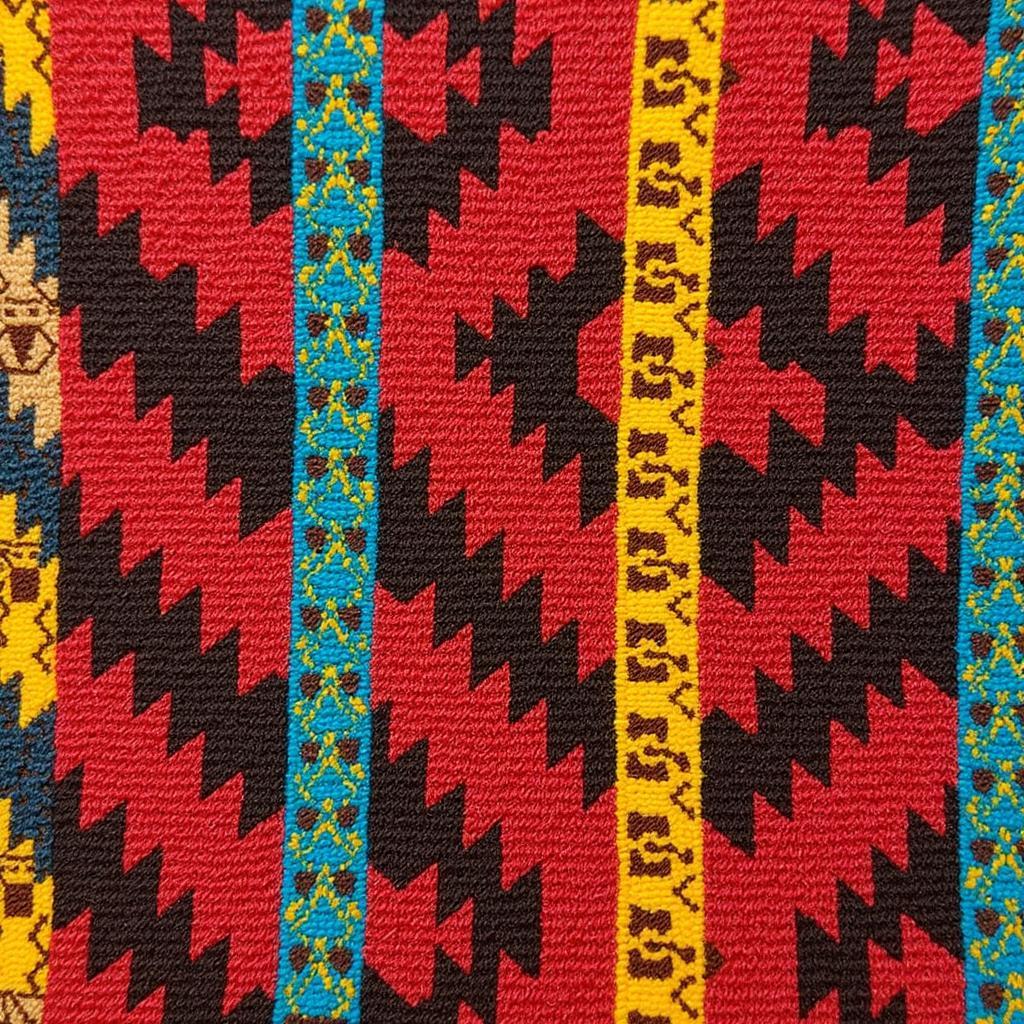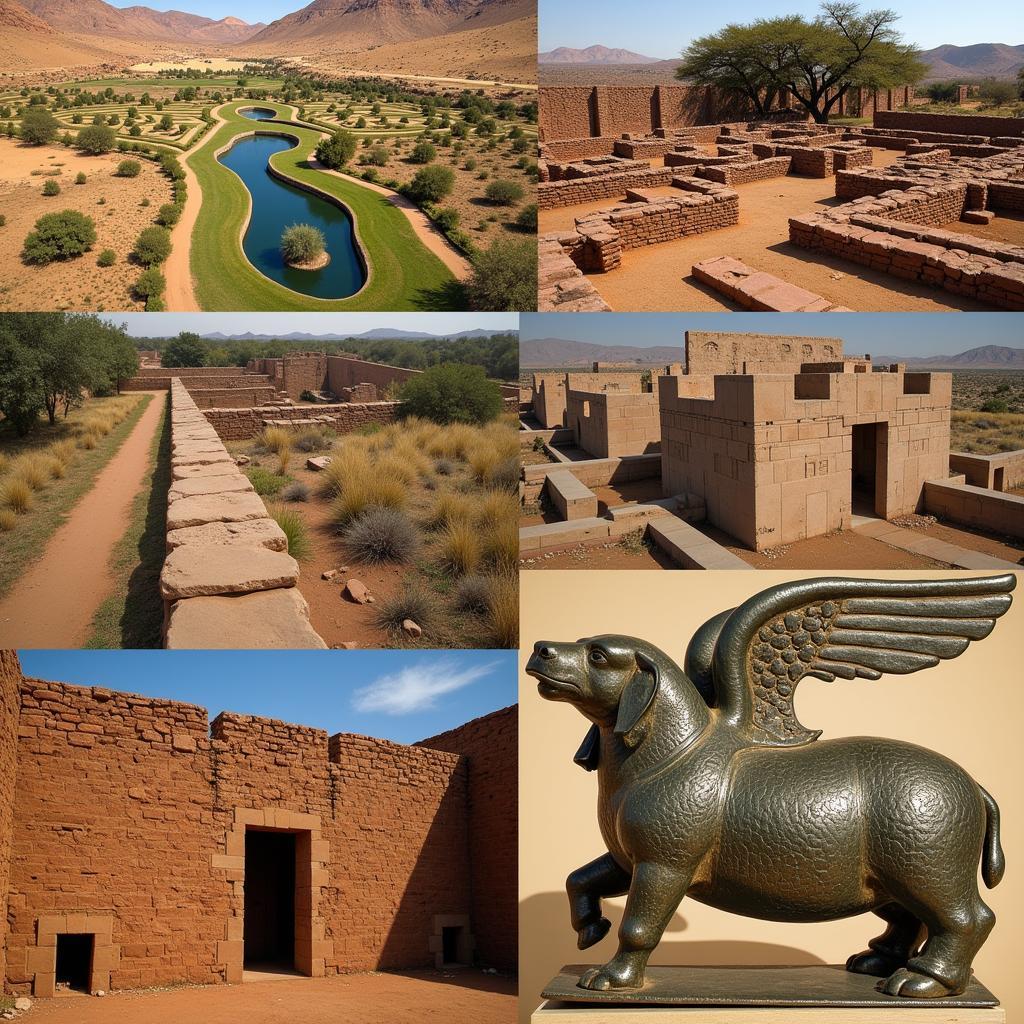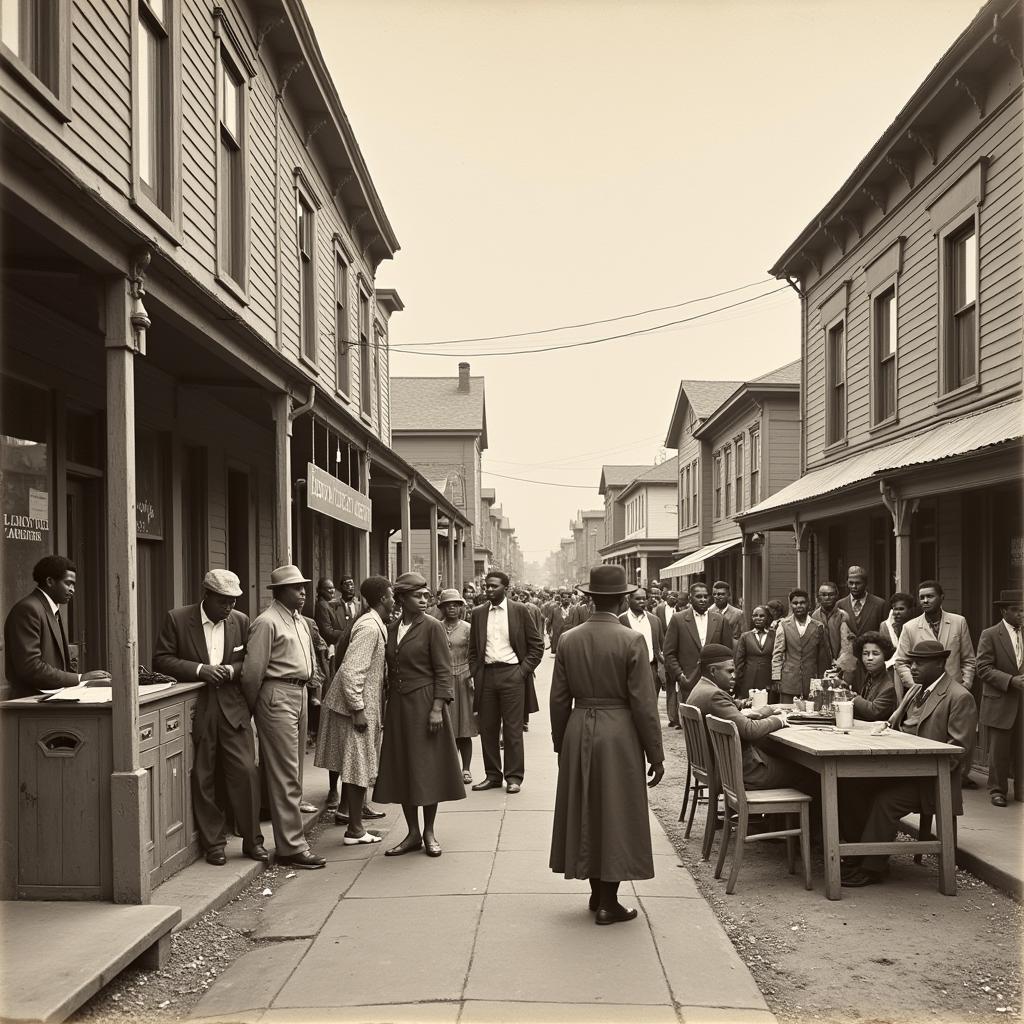Unveiling the Beauty of African Design Patterns
African design patterns are more than just aesthetically pleasing motifs; they are visual narratives that weave intricate stories of culture, history, and heritage. These patterns, often passed down through generations, are infused with symbolism, reflecting the beliefs, values, and everyday life of various African communities. From textiles and pottery to architecture and body art, these designs are a testament to the continent’s rich artistic traditions and its enduring legacy on global design trends.
The Significance of African Design Patterns
 African Textiles with Geometric Patterns
African Textiles with Geometric Patterns
The significance of African design patterns extends far beyond mere aesthetics. They serve as a visual language, communicating complex ideas and beliefs within and across communities. For instance, the Adinkra symbols of the Akan people of Ghana are a collection of visual proverbs that encapsulate philosophical concepts, moral values, and historical events. Similarly, the intricate beadwork of the Maasai people of Kenya and Tanzania often incorporates patterns that signify age, status, and clan affiliation.
Exploring the Diversity of African Design Patterns
The diversity of African design patterns is as vast and varied as the continent itself. Each region and ethnic group boasts a unique repertoire of motifs, influenced by their geographical location, cultural practices, and historical experiences.
Geometric Patterns: A Celebration of Order and Symmetry
Geometric patterns are a hallmark of African design, found in abundance across various mediums. These patterns, characterized by their use of shapes, lines, and angles, often reflect a deep-rooted appreciation for order, symmetry, and mathematical principles. The Ndebele people of South Africa, for example, are renowned for their vibrant, geometrically inspired house paintings that feature bold colors and intricate patterns.
Floral and Fauna Motifs: A Reflection of Nature’s Bounty
African design patterns often draw inspiration from the continent’s rich and diverse flora and fauna. From stylized depictions of animals to intricate floral motifs, these patterns often symbolize the close relationship between humans and nature. The kente cloth of Ghana, for instance, frequently incorporates motifs inspired by plants and animals, each carrying its own unique symbolic meaning.
Abstract and Symbolic Representations: Unveiling Hidden Meanings
Many African design patterns delve into the realm of abstraction and symbolism, conveying complex ideas and beliefs through stylized forms and motifs. The Yoruba people of Nigeria, for example, are known for their intricate wood carvings that often incorporate abstract patterns and symbols representing deities, ancestors, and spiritual concepts.
The Enduring Legacy of African Design Patterns
African design patterns continue to inspire artists, designers, and creatives worldwide. Their influence can be seen in contemporary fashion, interior design, graphic arts, and even digital media. By incorporating these patterns into their work, artists are not only paying homage to Africa’s rich artistic heritage but also introducing global audiences to the beauty, depth, and diversity of African culture.


